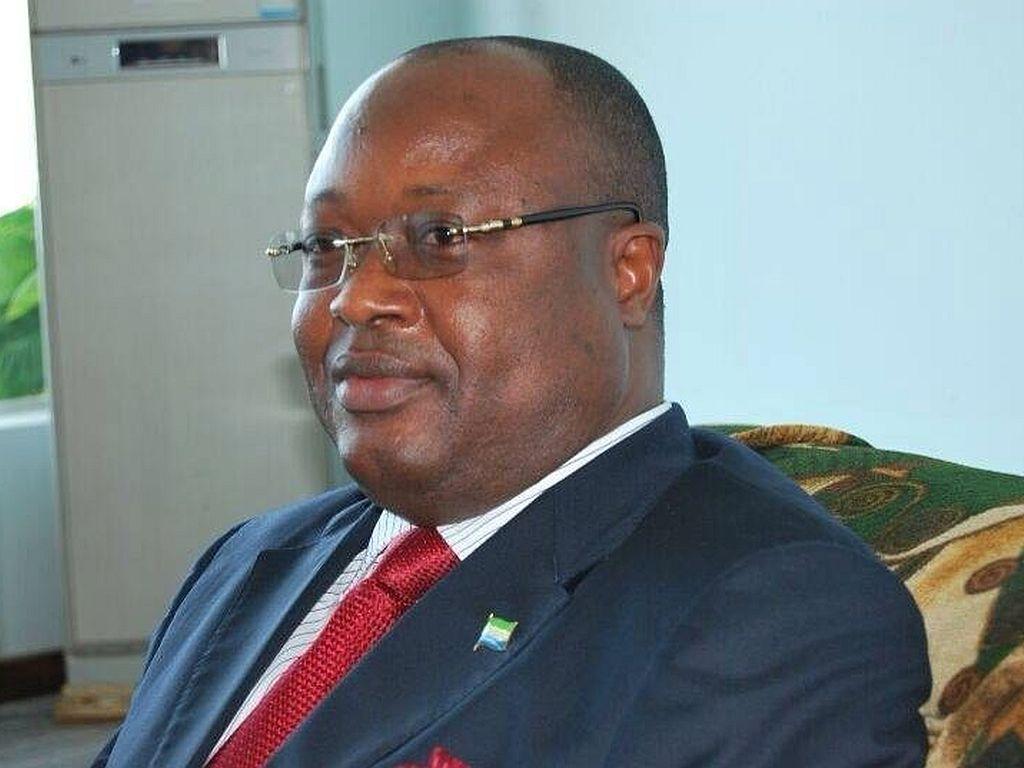By Tanu Jalloh
As it is right now, commercial banks cannot pay their numerous customers. Most of them small accounts holders whose numbers are likely to increase if the government’s current ‘financial policy of inclusion’ was to materialise any time soon. Large account holders, like the big investors around, are not likely to complain because the risk of losing them is in itself inhibitory. Bad for the banks!
But for obvious reasons, among them news values, newspapers have come to limit their description of the liquidity crisis to banks’ inability to service regular income earners, their clients. Most of these accountholders have opened accounts with banks as a condition they must meet to operate in the formal sector of the economy. They are in the majority, but are most likely to suffer when competition for the limited cash in the banks gets keenest. It is prudent income management by the banks but the lot to explain this has fallen on the politicians; it affects the lives of ordinary people.
When the situation deepened lately, the Bank Governor Dr Sheku Sambadeen Sesay admitted to a crisis in the financial sector. No details on the cause and the cost. A room for doubt has set in. In its wake politicians have confused the occasion either to make some political gains or to beat the ensuing propaganda off the scruff. Both efforts could not sufficiently appeal to the situation of Sierra Leoneans. In a community so polarised by politics and in a year so burdened by elections, it can never get better. While we may not be too sure of where we are headed in all of this, it behoves the media to do justice to the liquidity crisis management – or the lack of it – away from politics.
Thus, I feel compelled to widen the explanation by incorporating some basic facts; certainly not too technical. According to businessdictionary.com, liquidity crisis is a period of short term or technical insolvency (indebtedness, bankruptcy or collapse) during which persons or organisations cannot pay the due bills and meet other demands or obligations. When, generally, there is a negative financial situation characterised by a lack of cash flow, it becomes a liquidity crisis. By those definitions, we see that liquidity crisis runs through businesses and manifests itself when those firms cannot pay their workers because they simply cannot afford cash to do so. But the media in Freetown seems to have confined liquidity crisis to the banks for two reasons: firstly because it affects people’s daily lives and as a corollary, secondly, it makes for an effective tool to score or prove a point with a view to maximising some political capitals. Against that backdrop, I have attempted, here, to spin around the faltering banks as I put to perspective what liquidity crisis should mean to the country’s current circumstance.
A better context has been provided by Investopedia, an online portal, in its explanation of 'liquidity crisis': “For the economy as a whole, a liquidity crisis means that the two main sources of liquidity in the economy, banks and the commercial paper market, severely reduce the number of loans they make or stop making loans altogether. Because so many companies rely on these loans to meet their short-term obligations, this lack of lending has a ripple effect throughout the economy, causing liquidity crises at a plethora of individual companies, which in turn affects individuals.”
In mid-July last year the Bank of Sierra Leone (BSL) was pressed by the Bretton Woods Institutions to cause a critical assessment of the banking system, with focus on risks and vulnerabilities. The findings were grim. Since then, apparently, the BSL has heeded some prudential fiscal advice to include maintaining control over the supply of reserves and hence achieving its stated policy objective by developing a liquidity forecasting framework. Despite its attendant immediate effects, that action may well be the beginning to addressing the problem of liquidity crisis. The problem is, they don’t have time to explain these basics to the public.
Let me make reference to Simon T Gray’s attempt at explaining liquidity crisis and his eventual success at creating the level of understanding his country required to rationalise and appreciate the basic concept as cushion not a neglect. In a lecture series titled: Central Bank Management of Surplus Liquidity (August 2006, Centre for Central Banking Studies, Bank of England), the economist agreed there would be “disruption in the payment system: either banks would not be able to purchase enough banknotes to satisfy customer demand, or they would not be able to settle all payments due across the central bank’s balance sheet.” He did not in any way concede that liquidity crisis was the worst that could happen to any economy. In fact even where there could be enough cash in the banks, managing it properly could cause fear that there was serious problem. He therefore assured that: “At the margin, banks might have sufficient funds to make due payments, but would be left with smaller working balances than desired.”
According to WAMA the ECOWAS countries have had to face important inflationary pressures between 2008 and 2009. The large dependence of these countries on imported foodstuffs as against local production has exacerbated the situation. At the end of 2008, all these countries except Senegal recorded high inflation rates. To me fighting inflation has been the problem, and one such way could be that banks might have sufficient funds to make due payments, but would be left with smaller working balances than desired. A case of proposing necessary wrong at the spur of the moment to achieving that right long term financial policy goal.
Let me close this peroration by bringing a portion of my last article: ‘Mitigating macroeconomic risks in 2012’, published in the Wednesday March 7-13, 2012 edition of Politico. In a 2011 development policy note extended to assure the African Development Bank, the country’s Finance Minister Dr Samura Kamara stated inter alia that there were good signs the country’s economic policies were tenable. For example monetary policies have been set aside to achieve the goal of single-digit inflation in the medium-term while the Bank of Sierra Leone (BSL) continues to pursue its open market operations through a repurchase agreement or repos and reverse repos TO CONTAIN THE GROWTH IN EXCESS LIQUIDITY and hence INFLATIONARY PRESSURES.
According to the minister one such way to attain this feat would be to strengthen monetary policy operations and allow the BSL to strategically review such policy framework in a bid to introducing a benchmark interest rate - the monetary policy rate - which is used to signal the stance of monetary policy to the market.
The ordinary man on the streets might find these details very difficult to understand, but to achieve the objective of single digit inflation in a country still trying to balance imports with exports power (dis)parity, RESERVE MONEY IS JUSTIFIABLY PROGRAMMED TO SLOW DOWN.








